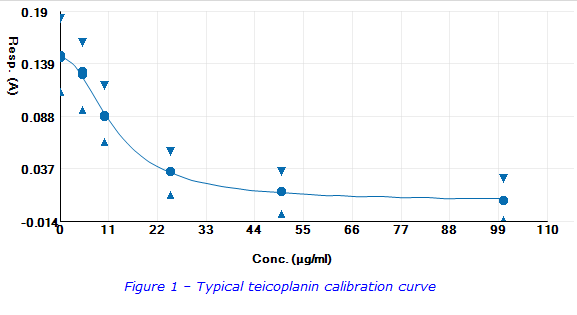New test: Teicoplanin Assay
New test: Teicoplanin Assay
Viapath has added teicoplanin to the repertoire of assays offered by the Therapeutic Drug Monitoring (TDM) laboratory based at King’s College Hospital.
What is Teicoplanin?
Teicoplanin (Targocid, Sanofi-Aventis) is a glycopeptide antibiotic used in the prophylaxis and treatment of serious infections caused by Gram-positive bacteria, including multi-resistant staphylococci. However, there are reports of Staphylococcus aureus with reduced susceptibility to glycopeptides and increasing reports of glycopeptide-resistant enterococci. Teicoplanin is similar to vancomycin, but has a significantly longer duration of action, allowing once daily administration after the loading dose. Teicoplanin is available in oral, intravenous, or intramuscular preparations.
Why is Teicoplanin measured?
Plasma/serum teicoplanin concentrations are not measured routinely because a relationship between plasma/serum concentration and toxicity has not been established. However, monitoring the teicoplanin concentration can be used to optimise treatment in individuals with severe sepsis or burns, deep-seated staphylococcal infection (including bone and joint infection), or endocarditis. Pre-dose (‘trough’) concentrations should be greater than 15 mg/L (greater than 20 mg/L in endocarditis or deep-seated infection such as bone and joint infection), but less than 60 mg/L.
How is Teicoplanin measured?
Teicoplanin is measured on an automated analyser, the Indiko Plus (ThermoFisher Scientific). The teicoplanin assay is a homogeneous particle-enhanced turbidimetric immunoassay and is based on competition between the drug in the sample and the drug coated onto a microparticle for antibody binding sites of the teicoplanin antibody reagent. The teicoplanin-coated microparticle reagent is rapidly agglutinated in the presence of the anti-teicoplanin antibody reagent and in the absence of any competing drug in the sample. The rate of absorbance change is measured photometrically. When a sample containing teicoplanin is added, the agglutination reaction is partially inhibited, slowing down the rate of absorbance change. A concentration-dependent classic agglutination inhibition curve can be obtained with maximum rate of agglutination at the lowest teicoplanin concentration and the lowest agglutination rate at the highest teicoplanin concentration (Figure 1).

Sample requirements
2 mL EDTA whole blood or 1 mL plasma or serum is required for analysis. Ideally samples should be taken pre-dose (a ‘trough’ sample).
Turn-around time is 5 working days.
Further information on requesting a teicoplanin assay, including a downloadable request form, can be found on the Viapath website:
www.viapath.co.uk/our-tests/teicoplanin
For additional details on teicoplanin, please email:
kch-tr [dot] toxicology [at] nhs [dot] net
References
- Darley E.S.R. and MacGowan A.P. (2004) The use and therapeutic drug monitoring of teicoplanin in the UK. Clinical Microbiology and Infection 10: 62-69.
- MacGowan AP. (1998) Pharmacodynamics, pharmacokinetics, and therapeutic drug monitoring of glycopeptides. Therapeutic Drug Monitoring. 20: 473-477.

